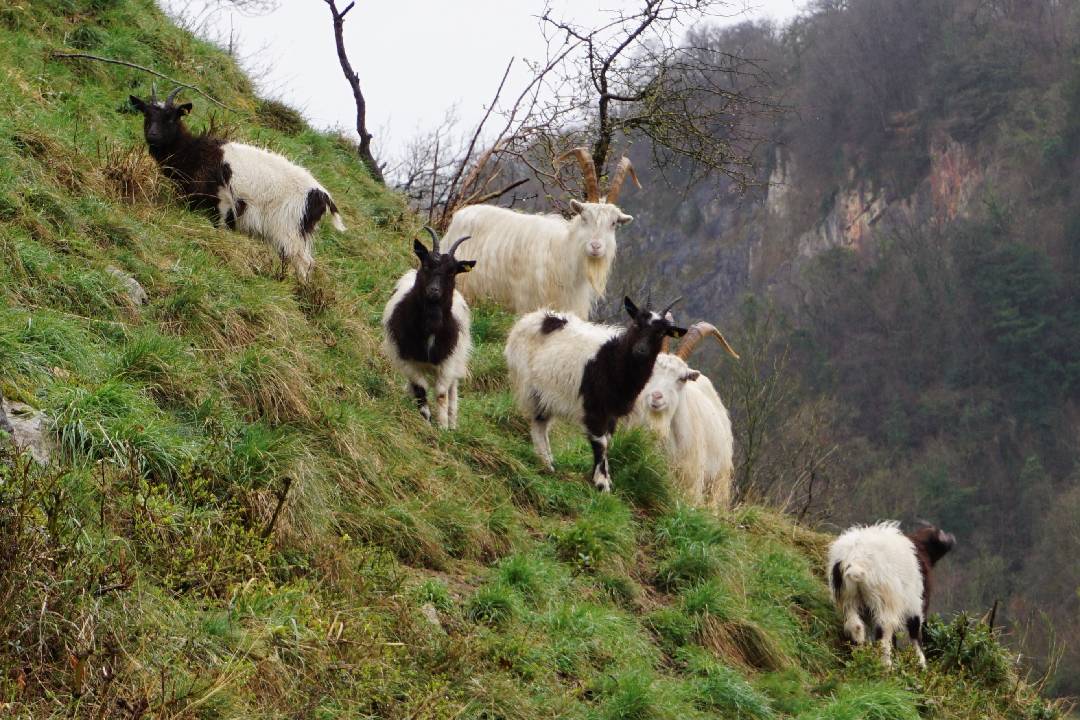Spring, summer & autumn sessions
Primary school sessions on the Downs
EYFS, KS1, KS2
Free to state funded primary schools. Fee paying schools pay a charge per student.
During spring and summer, the meadow areas are growing tall and are alive with wild flowers, chicks are preparing to fledge, and the whole environment is buzzing with invertebrates. In autumn the Downs become a patchwork of colour as the leaves begin to turn and berries ripen on the trees.
Your group might find themselves searching for minibeasts, on a wild flower treasure hunt or finding out what our rare plants need to thrive in our ‘hairy conservationists’ session. They might test their sleuthing skills on our mammal detectives trail, or discover fascinating facts about trees on our tree trail. They can also learn about our fabulous peregrine falcons, explore butterfly lifecycles or become part of a Downs food web! They might join us to explore the season enjoying using their senses or making autumnal art or finding out about the different strategies that animals use to survive the winter.
All our sessions have a slot where the children are calm and quiet, and just enjoying being amongst their local nature.
Why not visit the Suspension Bridge for a workshop at the Visitor Centre for half the day? (costs apply)
Hungry caterpillars and beautiful butterflies – lifecycles!
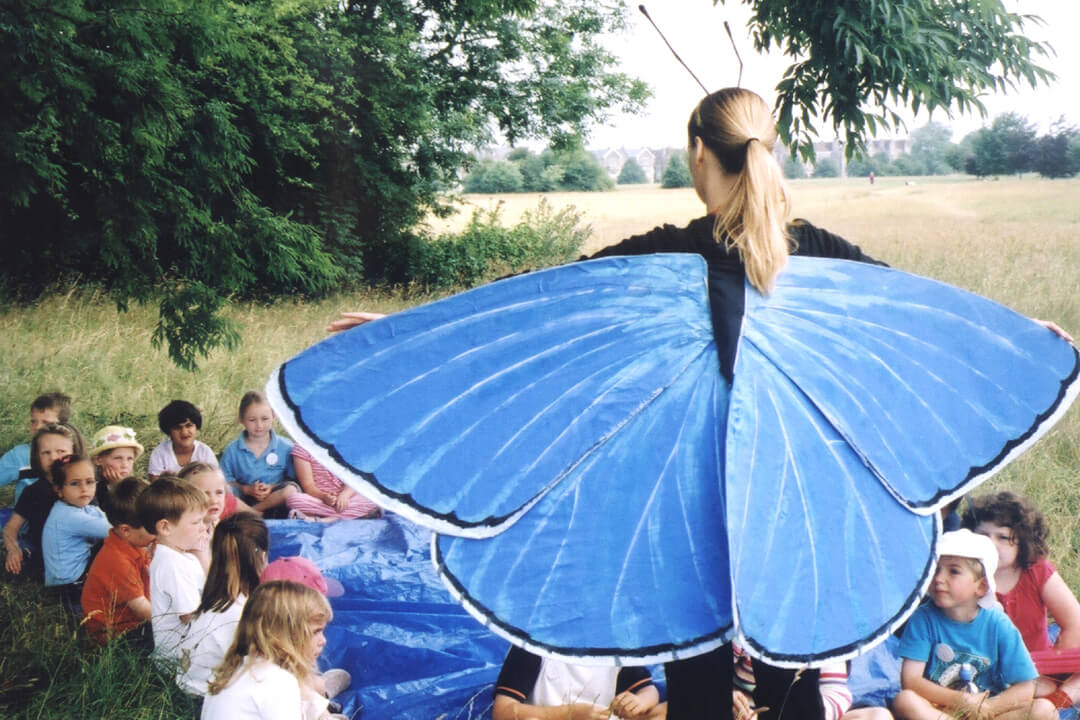
First there was an egg!
The concept of life cycles and how insects use their senses, colour and camouflage to survive are explored through a focus of caterpillars and butterflies. Start the day following a fun trail to find out what a caterpillar really needs before turning into a butterfly. Discover the ‘common blue’ – what does it use to taste and smell? Enjoy a lively butterfly feeding game and learn about symmetry in the natural world.
Suitable for: EYFS / KS1 – spring/summer/early autumn
Half day/Full day
Discovering the Downs

Which bird sings ‘teacher, teacher’?
Use your senses to discover the Downs! Make smelly plant cocktails, search for squishy, smooth and tickly treasures, listen for the sounds of the Downs, view the world in an upside down way and hug a tree blindfolded! Discover the Downs enables children to develop their knowledge and understanding of the natural world in a creative and stimulating way.
Suitable for: EYFS, KS1 & KS2 spring/summer/autumn.
Half day or combine with a Creativity session to make a full day.
Healthy habitats – habitats exploration!
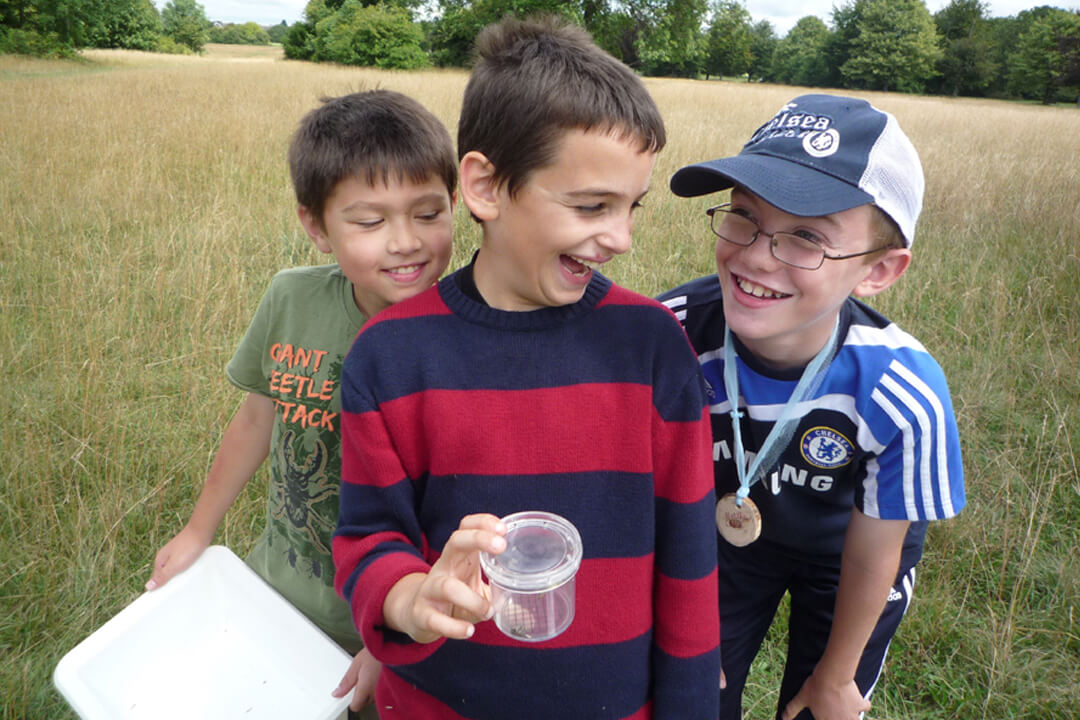
The Downs is many mesohabitats in one and home to so many plants and animals!
Come on a big bug hunt to discover what amazing creatures live in our exciting variety of habitats. Armed with dipping nets, bug pots, id charts and magnifying glasses, discover which mini beasts live in the pond and/or woodland! Become part of a freshwater or woodland food web to find out where all our species of plant and animal species find their food and learn all about interrelationships and adaptations.
Suitable for: KS2 spring/summer
Full day/Half day
Autumn/Half day
Mammal detectives

Whose poo is this?
Test your nature detecting skills as you come across nibbled seeds, funny footprints and a variety of poo! Which mammals have left their clues behind? Play some fun games to find out which senses UK mammals use and see which team can keep their mammal alive during the ‘night-time’.
Suitable for: KS 1 & 2 spring/summer/autumn
Half day / Full day
Fabulous peregrine falcons and food chains
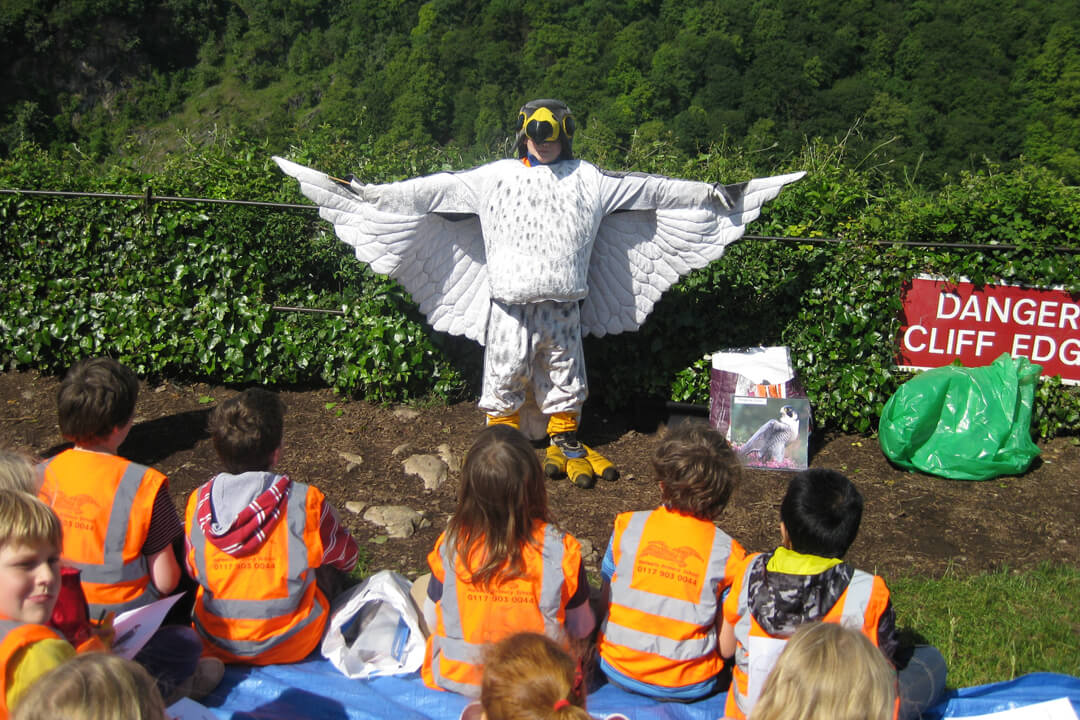
How quickly do peregrine chicks grow?
Discover how the fastest animal on the planet lives and breeds, and how it’s adapted to be a super successful predator. Children gain first-hand experience of food chains as they fly for their lives in our ‘Peregrine-pigeon’ game! Our resident peregrines may even put in an appearance as we look for them through our telescopes!
Suitable for: KS2 June/July
Half day
 These sessions are run in partnership with Natural England as part of the Higher Level Stewardship Educational Access Scheme.
These sessions are run in partnership with Natural England as part of the Higher Level Stewardship Educational Access Scheme.Hairy conservationists
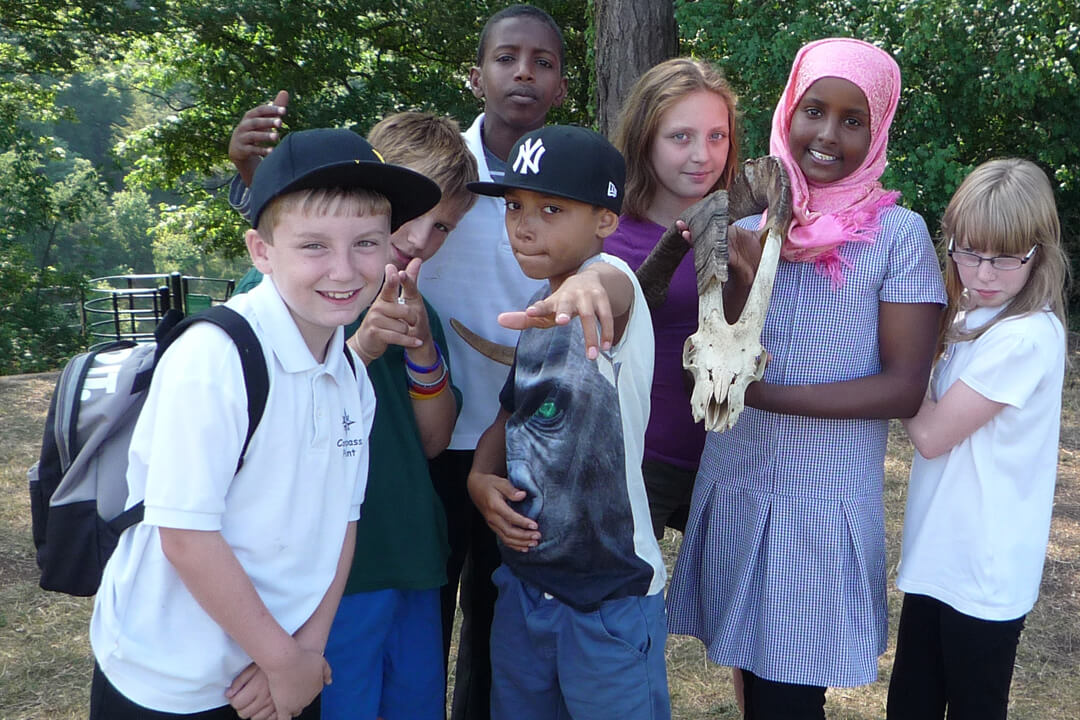
How can goats help the Bristol onion?
Explore what plants need in order to survive. Through storytelling and role play, learn how our famous goats are helping to save rare plants in the Avon Gorge. Children will be given the chance to become trainee goat checkers and, using binoculars, report back to the group on the health and happiness of these hairy conservationists. The session will include simple food chains. Older children can explore how the goats are adapted to this habitat and observe how environmental change can spell disaster for some living things.
Suitable for: KS1 and KS2 late spring/summer/autumn
Half day
 These sessions are run in partnership with Natural England as part of the Higher Level Stewardship Educational Access Scheme.
These sessions are run in partnership with Natural England as part of the Higher Level Stewardship Educational Access Scheme.Woodland wonders
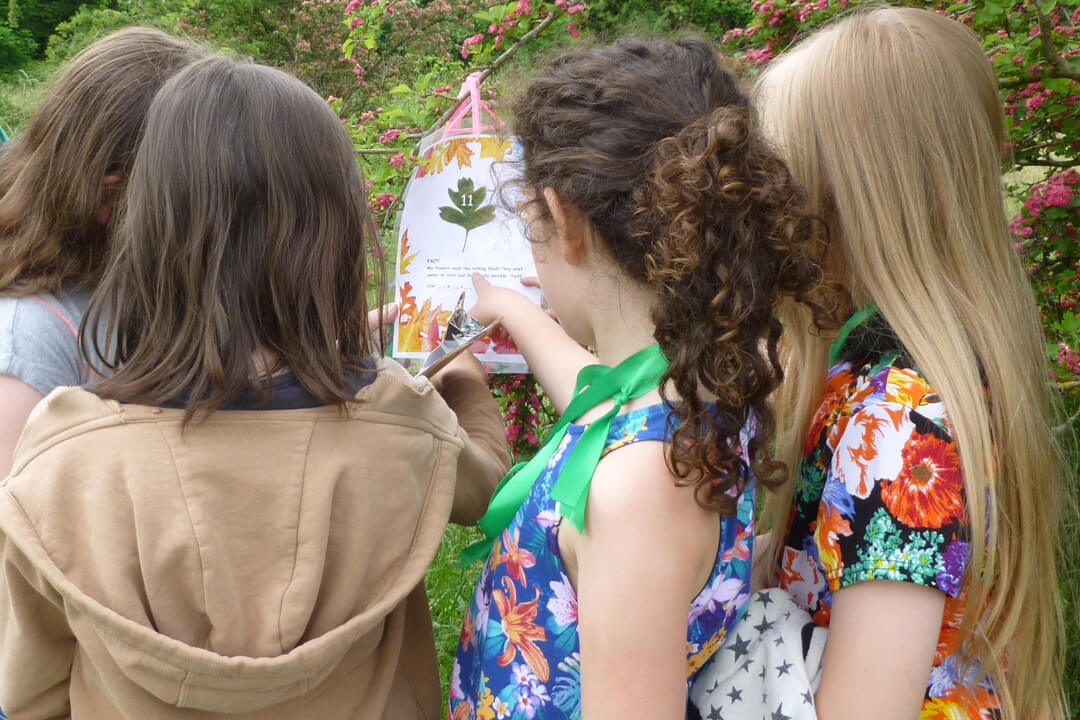
What’s this tree?
Find out fascinating facts and fabulous folklore and discover how important our trees are to people and wildlife on the Downs as we follow our tree trail. We’ll play a game to become part of a ‘living tree’ and get creative as we ‘interview’ one! Then with our creative juices working we’ll conjure up a poem or a story together using the natural world around us.
Suitable for: KS1 & 2 late spring/summer/autumn
Half day / Full day
Miniature World – minibeast day!

The importance of mini beasts to nature and our world…
…and how we can help them to thrive are the focus of this day. Follow a game of chance trail and understand the vital role mini beasts play in our world through the clues you find on your way. Learn about their importance as pollinators, decomposers and as part of the food chain. Delve into the deep as we pond dip to discover what lives in the freshwater habitat or, armed with bug viewers and magnifiers, go on a big minibeast hunt in the woods.
Suitable for: Years 1, 2 & 3 late spring/summer
Half day / Full day
Autumn / Half day
Wild flower treasure hunt
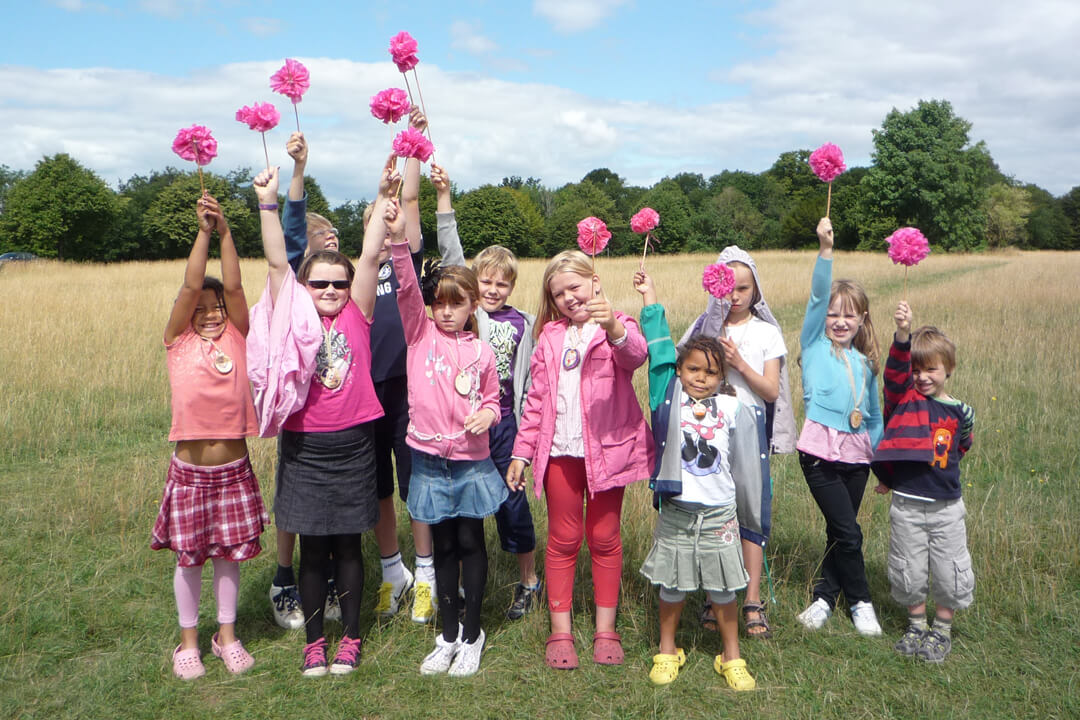
Colourful flowers
Hunt for clues on the trail to find the map hidden inside the treasure chest – will you find the long-lost Bristol onion?? What are the different parts of a plant called, how do they spread their seeds and what do they need to grow? Become a pollinator and collect your nectar and pollen in a lively game. Focus on colour and plant a seed – there’s so much to find out about our wonderful Downs meadow wildflowers!’
Suitable for: Years KS1 &2 summer
Half day / Full day
Autumnal Artists
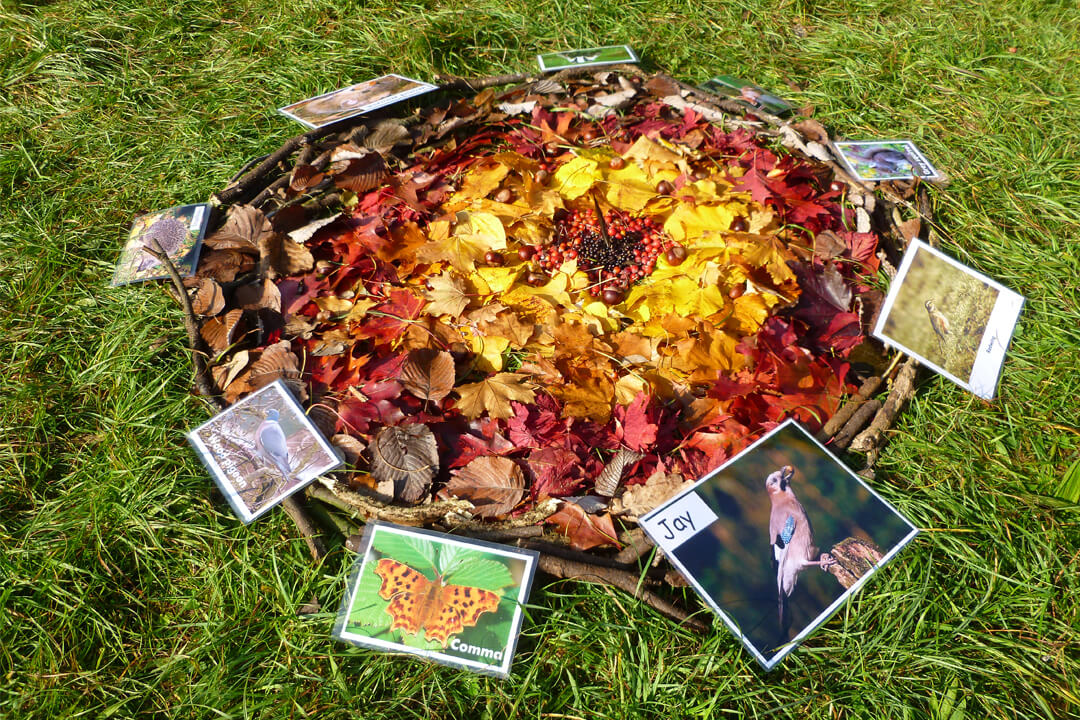
Why do leaves change colour?
Immerse yourself in the nature of the Downs and find out how nature prepares for winter through a wide range creative activities. Using seeds, leaves and berries we’ll create sensational autumn art in our groups to show to others, just like Andy Goldsworthy. Or paint a canvas with nature’s colours, or make a y-stick or fashion a clay creature!
Suitable for: all years – autumn
Half day / Full day
Autumn Antics
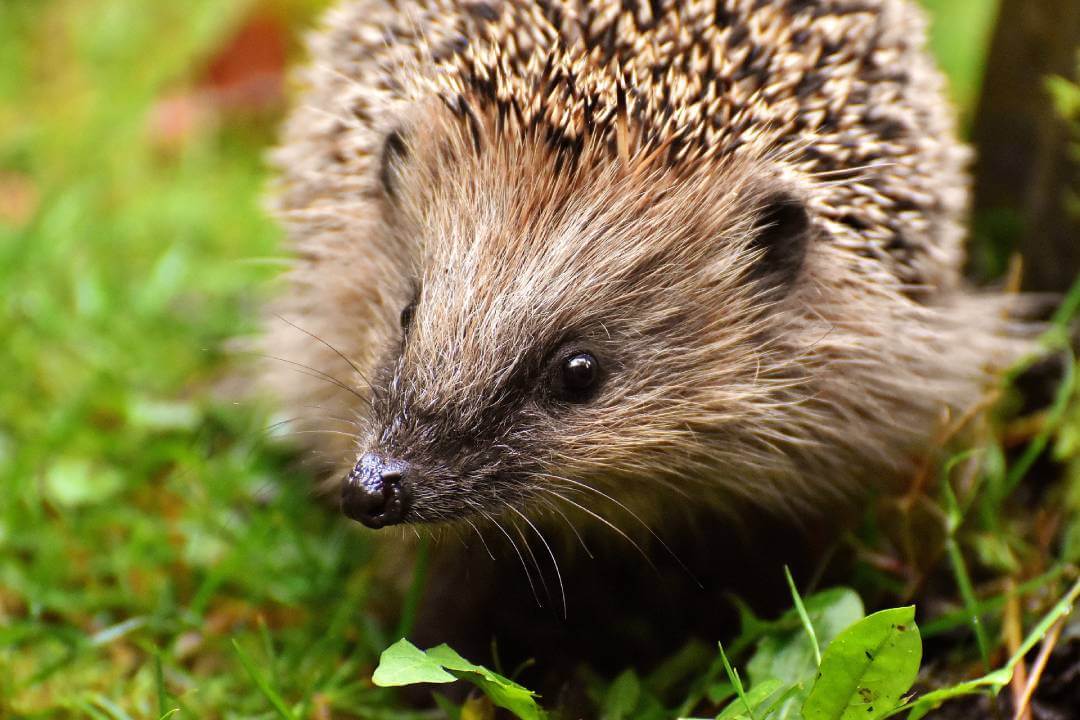
What happens to our creatures in winter?
Follow a trail of the hedgehog, jay or squirrel to find out how these Downs residents prepare for the long winter ahead. Collect conkers like the squirrel or bug hunt like the hedgehog! After hiding your acorns just like the jay, build a cosy night time nest for a small mammal and see how warm you can keep its ‘blood’ through the ‘night’. Which group will keep their mammal the warmest? Will it survive all through the night? Can you find your hidden winter acorn once again?
Suitable for: Years 1,2 & 3
Full day / Half day
Why not combine your trip to the Downs with a visit to the Clifton Suspension Bridge?
Spend half the day with a nature workshop on the Downs and the other half of your day learning about Brunel’s Suspension Bridge in a Visitor Centre workshop! Lunch space is available inside with Avon Gorge and Downs Wildlife or at the Visitor Centre, or have a picnic on the Promenade or the Observatory half way between each! Both learning spaces have toilets available.
Workshops are free of charge to state funded primary schools on the Downs but there is a cost for workshops at the Suspension Bridge Visitor Centre.
National Curriculum links
Our National Curriculum links to the Science programmes of study are broad and extensive, with many sessions covering different elements of each programme. The English programme of study can be brought into all sessions so that sessions are cross curricular. If you would like us to explain the curriculum link in one of our sessions please ask us.
Key Stage 1:
- identify and name a variety of common wild and garden plants, including deciduous and evergreen trees
- identify and describe the basic structure of a variety of common flowering plants, including trees
- identify and name a variety of common animals including fish, amphibians, reptiles, birds and mammals
- identify and name a variety of common animals that are carnivores, herbivores and omnivores
- observe changes across the four seasons
- explore and compare the differences between things that are living, dead, and things that have never been alive
- identify that most living things live in habitats to which they are suited and describe how different habitats provide for the basic needs of different kinds of animals and plants, and how they depend on each other
- identify and name a variety of plants and animals in their habitats, including microhabitats
- describe how animals obtain their food from plants and other animals, using the idea of a simple food chains, and identify and name different sources of food
- observe and describe how seeds and bulbs grow into mature plants
- find out and describe how plants need water, light and a suitable temperature to grow and stay healthy
- find out about and describe the basic needs of animals, including humans, for survival (water, food and air)
- notice that animals, including humans, have offspring which grow into adults
Key Stage 2:
- identify and describe the functions of different parts of flowering plants: roots, stem/trunk, leaves and flowers
- explore the requirements of plants for life and growth (air, light, water, nutrients from soil, and room to grow) and how they vary from plant to plant
- explore the part that flowers play in the life cycle of flowering plants, including pollination, seed formation and seed dispersal
- identify that animals need the right types and amount of nutrition, and that they cannot make their own food; they get nutrition from what they eat
- identify that humans and some other animals have skeletons and muscles for support, protection and movement
- recognise that living things can be grouped in a variety of ways
- explore and use classification keys to help group, identify and name a variety of living things in their local and wider environment
recognise that environments can change and that this can sometimes pose dangers to living things - construct and interpret a variety of food chains, identifying producers, predators and prey
- describe the differences in the life cycles of a mammal, an amphibian, an insect and a bird
- describe the life process of reproduction in some plants and animals
- identify how animals and plants are adapted to suit their environment in different ways and that adaptation may lead to evolution
Health & Safety Considerations
We carry out risk assessments for all sessions that we run.
We are trained first aiders.
All photographs © Avon Gorge & Downs Wildlife Project.



